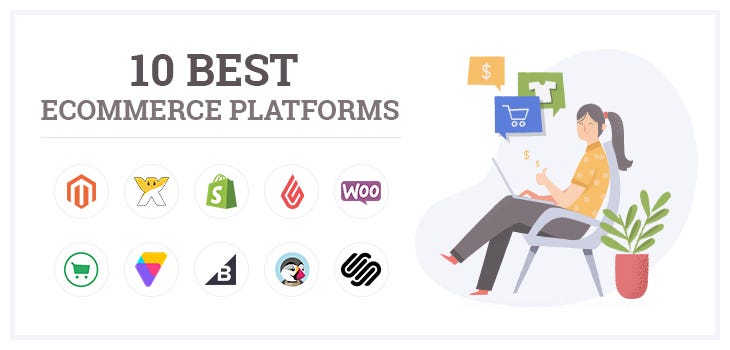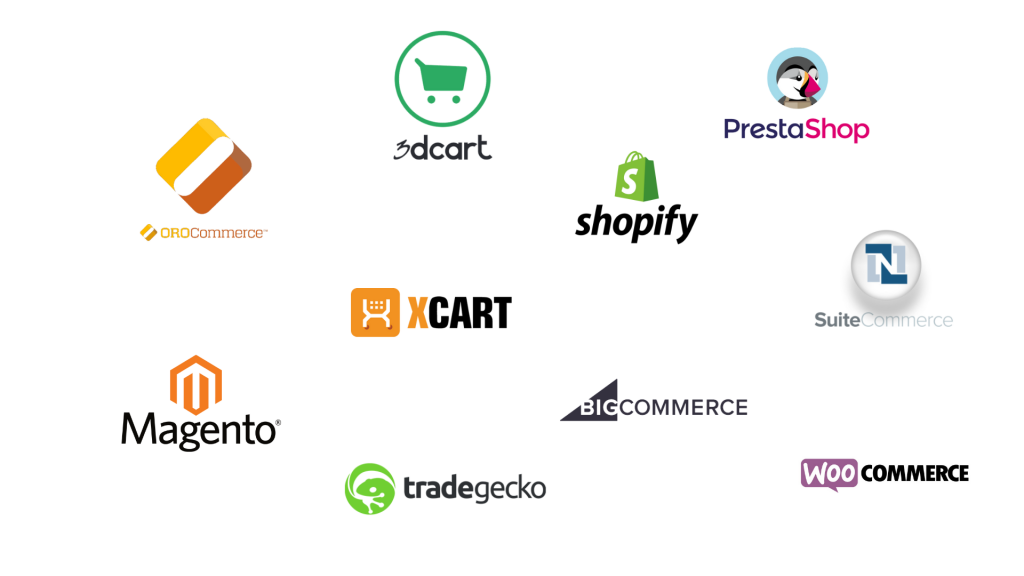The Ultimate Guide to Ecommerce Platforms in 2024
The digital commerce landscape has transformed dramatically, with online retail becoming an integral part of the global economy. In 2024, U.S. ecommerce sales have surpassed $1.1 trillion, demonstrating the crucial importance of choosing the right ecommerce platform for business success.

Market Overview
The ecommerce platform market has evolved significantly, with several key players dominating the space. Shopify leads the market with a commanding 28.41% share, while Squarespace and Wix follow with 20.51% and 18.28% respectively. This competitive landscape has driven continuous innovation and improvement in platform offerings, benefiting businesses of all sizes.
Top Ecommerce Platforms
Leading Solutions
Shopify stands out as the most versatile and widely-adopted platform, serving over 2 million active merchants globally. Its success stems from its user-friendly interface, extensive app marketplace, and robust feature set. Starting at $29 per month, it provides everything from basic online store functionality to enterprise-level solutions.
WooCommerce has carved out a significant niche, particularly among WordPress users. As an open-source platform, it offers unparalleled flexibility and customization options. While the core plugin is free, businesses should account for hosting, security, and premium extension costs.
BigCommerce has positioned itself as a serious contender for medium to large businesses. Its enterprise-grade features, including multi-currency support and advanced SEO tools, make it particularly attractive for companies planning significant scaling.
Emerging Platforms
Wix has revolutionized the space with its AI-powered website building capabilities. The platform's drag-and-drop interface and integrated ecommerce features make it an excellent choice for creative businesses and startups looking for visual impact.
Squarespace continues to gain market share, particularly among creative professionals and small businesses. Its professionally designed templates and integrated marketing tools provide a compelling package for brands focused on visual presentation.
Platform Comparison
Pricing Structure
| Platform | Starting Price | Transaction Fees |
|---|---|---|
| WooCommerce | Free | 2.9% + $0.30 |
| Shopify | $29/month | Varies by plan |
| BigCommerce | $29.95/month | None |
Key Features
- Website Building Tools: Drag-and-drop builders, customizable templates, and mobile optimization capabilities are standard across major platforms.
- Inventory Management: Advanced systems offer real-time tracking, automated reordering, and multi-location inventory synchronization.
- Payment Processing: Platforms integrate with multiple payment gateways, offering options like Shop Pay, Apple Pay, and cryptocurrency payments.
- Multi-channel Sales: Integration with marketplaces like Amazon, eBay, and social media platforms has become crucial for reaching wider audiences.
- Mobile Commerce Support: With mobile commerce accounting for over 70% of ecommerce traffic, robust mobile features are essential.
| Features | Shopify | WooCommerce | Magento | BigCommerce |
|---|---|---|---|---|
| Starting Price | $29/month | Free (+ hosting costs) | $24,000/year (Enterprise) | $29.95/month |
| Transaction Fees | 2.9% + 30¢ (higher with external gateways) | Depends on payment gateway | No additional fees | No additional fees |
| Ease of Use | Very Easy | Moderate | Complex | Easy |
| Technical Expertise Required | Minimal | Moderate | Advanced | Basic |
| Hosting | Included | Self-hosted | Self-hosted | Included |
| Customization | Good | Excellent | Excellent | Good |
| Scalability | Good | Moderate | Excellent | Very Good |
| Customer Support | 24/7 Support | Community Support | Enterprise Support | 24/7 Support |
| App Store/Extensions | 6,000+ apps | 55,000+ plugins | 3,000+ extensions | 1,000+ apps |
| SEO Features | Good | Excellent | Excellent | Very Good |
| Mobile Optimization | Excellent | Theme Dependent | Good | Excellent |
| Security | Included SSL, PCI Compliant | Requires Setup | Requires Setup | Included SSL, PCI Compliant |
| Ideal For | Small to medium businesses | WordPress users, small businesses | Large enterprises | Medium to large businesses |
| Multi-channel Selling | Excellent | Good | Good | Excellent |
| Payment Gateways | 100+ | 100+ | 150+ | 65+ |
Considerations for Selection
Business Size Factors
Small businesses should prioritize platforms offering quick setup, intuitive interfaces, and cost-effective solutions. Shopify and Wix excel in this category, providing essential features without overwhelming complexity.
Enterprise organizations require platforms capable of handling high transaction volumes, complex inventory management, and international sales. BigCommerce and Shopify Plus offer the necessary scalability and advanced features.
Custom development needs vary significantly. WooCommerce and BigCommerce provide extensive APIs and development tools for businesses requiring unique functionalities.

Technical Requirements
Hosting Options: While some platforms offer hosted solutions, others require separate hosting arrangements. Hosted platforms like Shopify eliminate technical maintenance concerns but may limit customization.
Security Features: PCI compliance, SSL certificates, and fraud prevention tools are essential considerations. Leading platforms offer robust security features, but implementation requirements vary.
Integration Capabilities: The ability to connect with existing business systems, including ERP, CRM, and accounting software, can significantly impact operational efficiency.
Performance Metrics: Site speed, uptime guarantees, and bandwidth limitations directly affect customer experience and conversion rates. Cloud-based platforms typically offer superior performance and reliability.
Future Trends
The ecommerce platform landscape continues to evolve rapidly. Several key trends are shaping the future:
Headless Commerce Solutions: The separation of front-end presentation from back-end functionality is gaining traction, offering greater flexibility and improved performance.
Mobile-First Platforms: As mobile commerce grows, platforms are prioritizing mobile-first development approaches and progressive web apps.
AI-Powered Features: Artificial intelligence is revolutionizing personalization, customer service, and inventory management. Platforms are incorporating AI tools for product recommendations, chatbots, and predictive analytics.
Omnichannel Integration: Seamless integration across physical stores, online marketplaces, and social media platforms is becoming standard. Leading platforms are expanding their omnichannel capabilities to provide unified commerce experiences.
The success of an online business increasingly depends on choosing the right ecommerce platform. While features and pricing are important considerations, businesses must also evaluate their specific needs, growth plans, and technical capabilities. The platform landscape continues to evolve, with new technologies and capabilities emerging regularly. Regular assessment of platform capabilities against business needs ensures continued alignment with market demands and customer expectations.
